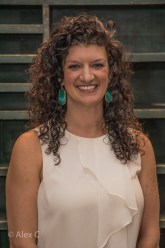by Kelli Croll, PT, MSPT, C/NDT
March is National Cerebral Palsy Awareness Month, providing an opportunity to inform, aware, and support those with cerebral palsy. We teamed up with CPATH Texas to provide you with the information you need to know.
What is cerebral palsy?

Cerebral palsy is the most common motor disability in children worldwide and is defined as a group of disorders that affect movement, posture, and balance.
Congenital CP describes any brain damage that occurs before or during birth.
Acquired CP is a term used when damage occurs more than 28 days after birth, usually due to a brain infection or significant brain injury.
Causes and diagnosis
The most common causes of cerebral palsy include maternal infections, fetal stroke, brain bleed, oxygen deprivation, infantile infections, gene mutations and traumatic brain injury.
Diagnostic imagining such as a brain MRI can help confirm the diagnosis, but there are signs to watch for as well. Parents can observe their baby’s motor milestones, as a significant delay can be a sign of cerebral palsy.
Signs to watch for in babies 3-6 months of age
- Noticeable head lag (head falls back) when picked up from back
- Feels stiff
- Feels floppy
- Stiffness in legs or legs cross when picked up
- Overextension of back and neck when being held
Signs to watch for in babies over 6 months of age
- Cannot bring hands together
- Difficulty bringing hands to mouth
- Unable to roll in either direction
- Reaching with only one hand, while other hand is fisted
Please note that these signs can certainly occur in those without CP. It is best to consult one’s pediatrician or a pediatric neurologist with any specific concerns.
Interventions and treatments for cerebral palsy

If a diagnosis is given, early intervention is best practice, since cerebral palsy requires long-term care. Medical specialists such as a pediatric neurologist, pediatric PMR (physical medicine & rehab) and pediatric orthopedist should work together in a collaborative manner to provide the best care. Additionally, a variety of therapies are an integral part of CP care, including physical, occupational, speech, recreational and hippotherapy (horseback riding therapy).
At first thought, CP can be an overwhelming diagnosis. But parents are their children’s biggest advocates and cheerleaders. Encourage independence in any form. Ask questions, no matter how difficult. Find support in family, friends, or other individuals with a similar diagnosis. There are so many individuals with CP in the world that lead healthy, productive lives and just desire what any person does: to feel included & accepted, no matter the ability.
Download a printable version of this article here.
LISTEN NEXT: BEYOND THE NICU EPISODE 1: ANXIETY AFTER THE NICU

Kelli Croll, PT, MSPT, C/NDT is a physical therapist specializing in pediatrics with a focus on neurological disorders. She has a specific passion for helping those with cerebral palsy and besides direct treatment, she collaborates with a pediatric neurologist for monthly tone management clinics, as well as works for CPATH, an Austin-based nonprofit that helps individuals with cerebral palsy.
